- Dr Rouble Rana
- March 28, 2025
Content Outline
Caring for Your Baby’s Teeth (0-2 Years)
Oral care should begin as early as possible, even before your baby’s first tooth appears. Many parents don’t realize that baby teeth can develop cavities soon after they emerge. In fact, studies show that 2 in 10 children experience early childhood cavities (also known as Early Childhood Caries) before they turn two years old.
The biggest cause of early cavities is putting a baby to bed with a bottle of milk, formula, or juice. These drinks contain natural or added sugars that stick to the teeth and lead to decay. Even breast milk contains sugars that can contribute to cavities if left on the teeth overnight. When sugars sit on the teeth for long periods, they provide food for bacteria, which then produce acids that weaken the enamel and cause cavities.
1. Signs of Early Childhood Tooth Decay
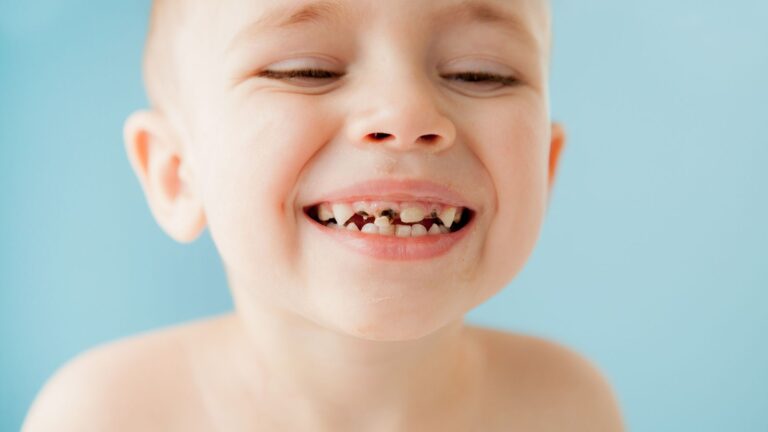
Early tooth decay usually appears as white or brown spots on the upper front teeth, near the gum line. Some parents may not recognize these as cavities and assume they are harmless stains. However, if left untreated, the decay can quickly spread to other teeth, causing pain and leading to more serious dental problems.
2. How to Keep Your Baby’s Teeth and Mouth Clean
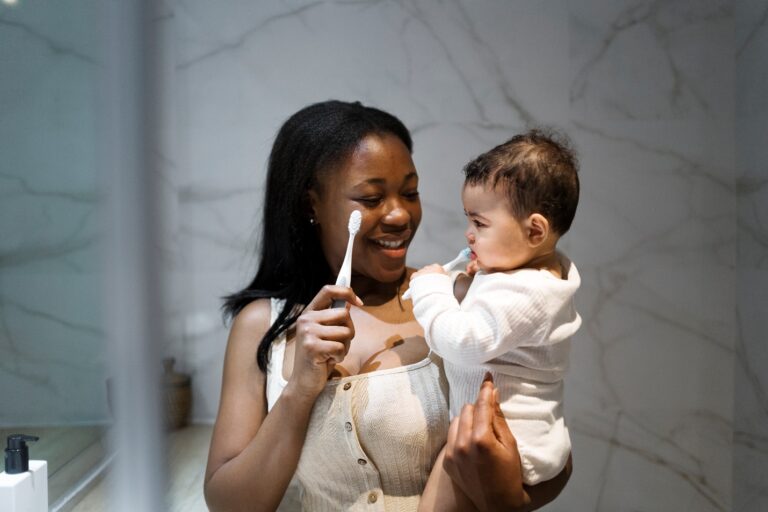
Good oral hygiene should start even before the first tooth appears. Here are some simple but important steps to take care of your baby’s oral health:
- Before teeth emerge: Gently wipe your baby’s gums with a clean, damp gauze pad or washcloth after feedings. This helps remove any milk residue and prevents bacteria buildup.
- When the first teeth appear: Start brushing as soon as the first tooth erupts. Use a small, soft-bristled toothbrush with a tiny smear of fluoride toothpaste (about the size of a grain of rice). Brush gently but thoroughly, making sure to clean all surfaces of the teeth.
- Brushing routine: Brush your baby’s teeth twice a day—once in the morning after breakfast and once before bedtime. Each brushing session should last about two minutes.
- Flossing: Once your child has two teeth that touch, introduce flossing to remove food and plaque from between the teeth.
3. Preventing Early Cavities
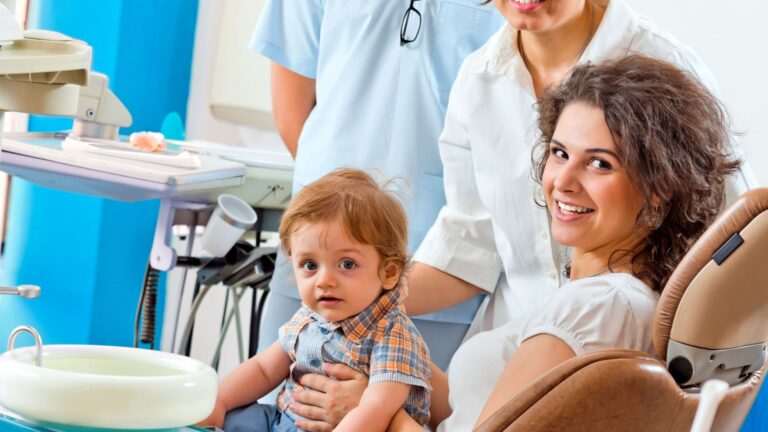
To keep your baby’s teeth healthy, follow these key preventive steps:
- Avoid prolonged bottle use: Do not let your baby sip from a bottle all day. A bottle should be finished within 5 to 6 minutes.
- Never put your baby to bed with a bottle: Milk or juice left in the mouth overnight increases the risk of cavities.
- Limit sugary foods and drinks: Avoid giving your child sugary, sticky, or chewy snacks such as candy, cookies, crackers, and juice. These foods can cling to teeth and cause decay.
- Clean after breastfeeding: After nursing, gently wipe your baby’s gums and teeth with a clean, damp cloth.
- Schedule a dental visit: Your baby should have their first dental checkup when the first tooth appears or by their first birthday.
4. Transitioning from the Bottle
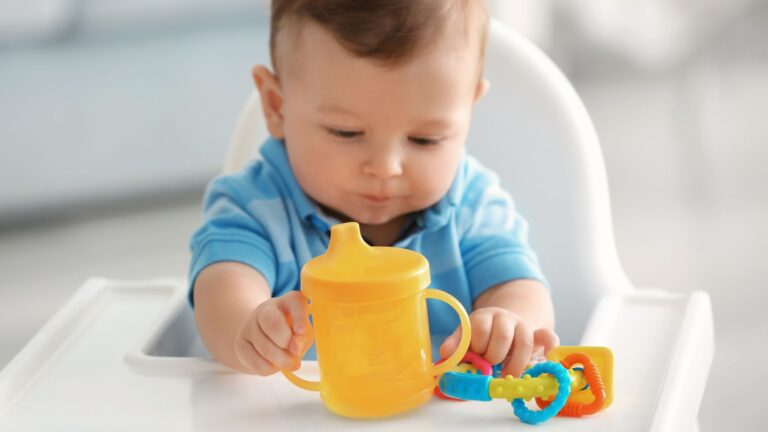
One crucial step in protecting your baby’s teeth is transitioning from a bottle to a cup. Pediatric dentists recommend weaning your child off the bottle by their first birthday. Using a bottle for too long increases the risk of tooth decay, improper jaw development, and misaligned teeth. Instead, encourage your baby to use a sippy cup or an open cup with water.
By following these simple but essential steps, you can help ensure that your baby has a healthy smile for life. Remember, good oral hygiene habits start early, and they set the foundation for strong, cavity-free teeth in the future.
Early dental care is key to a lifetime of healthy smiles. Don’t wait for cavities to appear—schedule your baby’s first dental checkup by their first birthday! Dr. Rouble Rana at PureSmile specializes in gentle, expert care for little smiles. See at the end for booking details.
Taking Care of Your Child’s Teeth (Ages 2-5)
By the time your child is around 2.5 to 3 years old, all their baby teeth will have come in. This is also when they start going to preschool or kindergarten and may be exposed to more sugary snacks and drinks. Good oral care habits start early, and teaching your child how to take care of their teeth now will set them up for a lifetime of healthy smiles.
1. Daily Brushing Routine
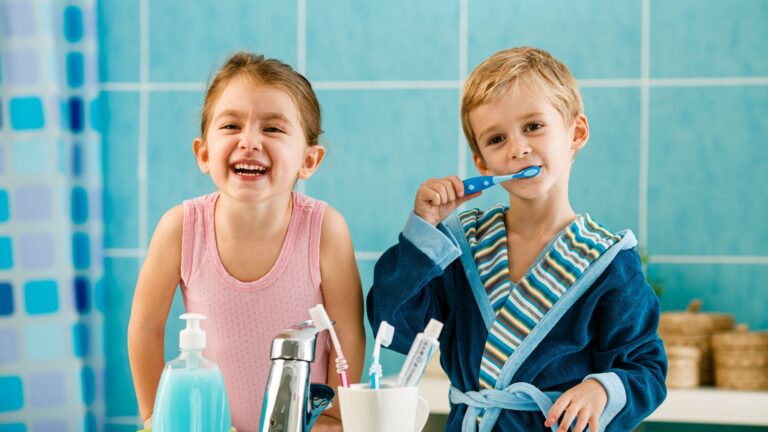
To keep your child’s teeth healthy, follow these simple steps:
- Brush twice a day – once in the morning after breakfast and again before bed.
- Always supervise brushing – young children need help to brush properly and safely.
- Use fluoride toothpaste – pick a children’s toothpaste that contains at least 1,000 ppm of fluoride (check the label).
- Use a small amount of toothpaste – a pea-sized amount is enough.
- Encourage spitting, not rinsing – after brushing, have your child spit out the toothpaste but avoid rinsing with water. This helps the fluoride protect their teeth longer.
- Make oral care fun and rewarding – praise your child for brushing well! Instead of sugary treats, reward them with a fun sticker, a small toy, or a healthy snack like apple slices or carrot sticks.
2. Helping Your Child Brush Properly
Young children are still learning how to brush correctly, so they need guidance. Here’s how you can help:
- Use a timer or play a song – brushing for two minutes can feel long for a child, so use a timer or play their favorite song to make it more fun.
- Show them how to move the toothbrush – gently guide their hand so they can feel the right brushing motion.
- Use a mirror – let your child watch themselves brush in the mirror so they can see where they are cleaning.
- Ensure safety – never let children run or walk around with a toothbrush in their mouth to prevent accidents.
3. When to Start Flossing

By the time your child’s teeth start touching each other, it’s important to introduce flossing. Since young kids may not have the coordination to do it properly, an adult should help floss their teeth once a day, preferably before bedtime.
4. How Long Should Parents Help
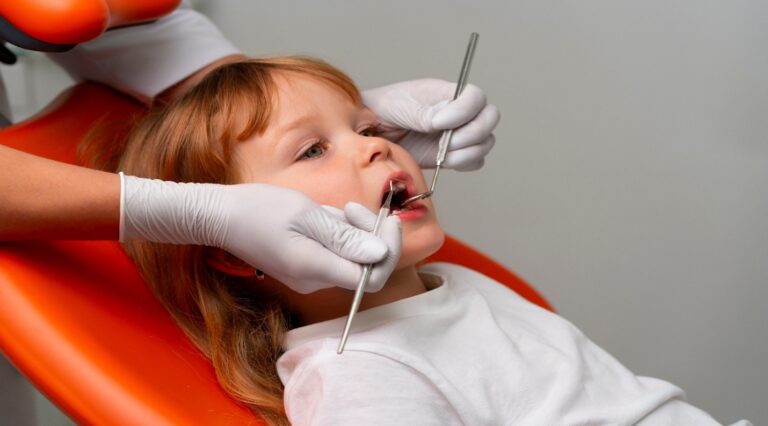
Even though kids may want to brush their teeth on their own, they still need help. Parents should continue assisting with brushing and flossing until their child is around 10 years old. Let them brush first, but always do a final check and go over any missed spots.
Good dental habits start early, and with your help, your child can develop a strong foundation for a lifetime of healthy teeth and gums!
Taking Care of Your Child’s Teeth (Ages 6-12)
As your child grows, their teeth go through big changes. The first permanent teeth usually start coming in around six years old (give or take six months), and by 12 years old, most of their permanent teeth will be in place. This stage is crucial for building lifelong healthy habits.
1.Brushing and Daily Care

Good brushing habits help keep cavities and gum problems away. Here’s what you need to know:
- Brush your child’s teeth at least twice a day—once before bed and once after breakfast.
- Use a soft-bristled toothbrush and fluoride toothpaste (1,350-1,500ppm fluoride—check the label).
- A pea-sized amount of toothpaste is enough.
- Brush for two minutes—you can use a timer, play a short song, or use a fun brushing app to make it easier.
- After brushing, spit out the toothpaste but don’t rinse—this helps the fluoride stay on the teeth and protect them longer.
- Limit sugary and sticky snacks—too many sweets can lead to cavities. Instead, encourage healthy foods like fruits, vegetables, cheese, and nuts.
2. Sealants: Extra Protection Against Cavities
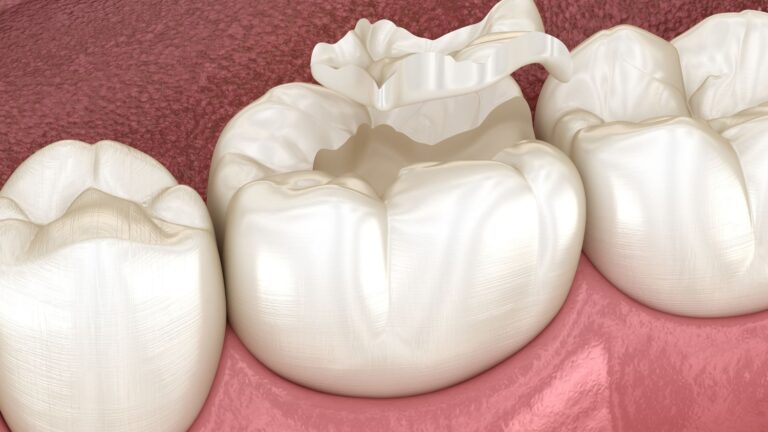
Dental sealants are a thin, protective coating applied to the chewing surfaces of molars (back teeth). These teeth have deep grooves where food and bacteria can get stuck, making them more likely to get cavities. Sealants create a barrier, making it harder for cavities to form. Your dentist may recommend sealing your child’s first molars, which usually come in around age 6.
3. Mouthguards for Sports
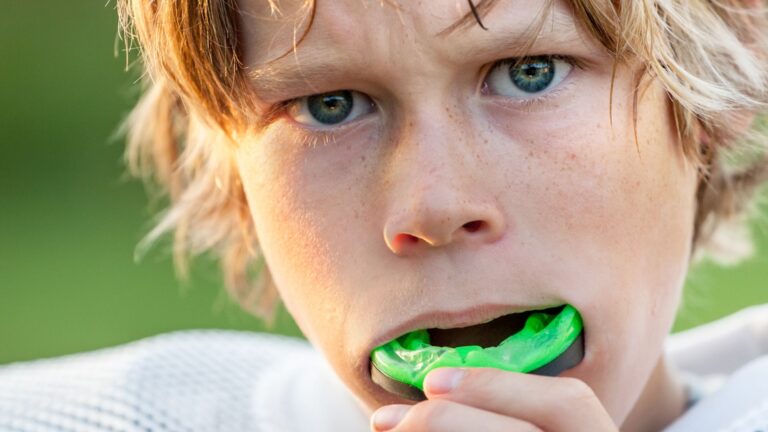
If your child plays sports, especially contact sports like football, basketball, hockey, or martial arts, a mouthguard can help protect their teeth from injuries.
- You can buy ready-made mouthguards at most sports stores, but they may not fit perfectly.
- A custom-made mouthguard, made by a dentist, will fit better and offer more protection since it’s molded to your child’s teeth.
4. Orthodontic Checkup: When to See a Specialist
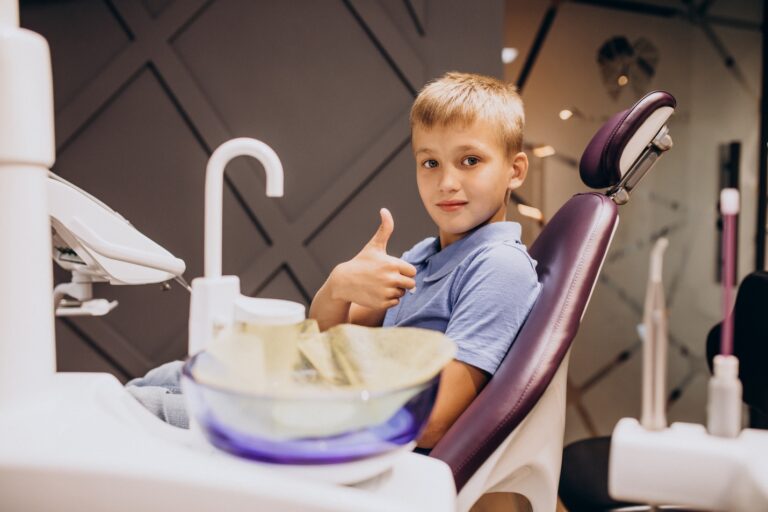
Many children need braces or other orthodontic treatment to straighten their teeth or fix bite problems. While full treatment usually starts after age 10, an early orthodontic checkup is recommended around age 8.
- Every child develops differently, so the right time for braces depends on their teeth and jaw growth.
- Some children may need early treatment while they still have both baby and adult teeth.
- Your pediatric dentist can check for any orthodontic concerns during regular visits and refer you to an orthodontist if needed.
- By following these simple steps, you can help your child develop strong, healthy teeth that last a lifetime! 😊

📅 Book an Appointment with PureSmile and give your child the best start on their oral health journey!
Pudong Locaion:
No. 1, Biyun Road, Jinqiao, Pudong
+8621 6105 9400
Jing’an Location:
No. 818 Nanjing West Road, Room 1201, JingAn
+8621 6363 6388
Minhang Location:
569 Yunle Road, Shop 111, Huacao Town, Minhang
+8621 3490 9068
You may also be interested in:
Our Tears to Cheers Story With PureSmile Dentists
Choosing the Perfect Dentist and Orthodontist for Your Family
